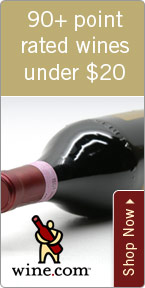The Influence Of Yeast And Oak

Wednesday - October 21, 2005
| Share
 Del.icio.us
Del.icio.usI am still amazed at the myriad of techniques and choices that winemakers have to choose from in the wine making process that ultimately influence the flavor of every wine. Which grapes to use in the blend or to blend at all? When they should be harvested, which yeast to use, what type of oak to age them in and for how long are just a few of the major choices.
I was reminded of these choices in a tasting with Doug Gore, vice president in charge of winemaking at Ste. Michelle Wine Estates (no relation to the former vice president). This high profile portfolio includes some of Washington state’s greatest wineries: Chateau Ste. Michelle, Columbia Crest, Col Solare, Snoqualmie and North Star. He oversees each project and directs their respective winemakers as a counselor or big brother would. With more than a dozen years of winemaking experience under his belt, he is still exuberant and passionate about every vintage and the adventures of winemaking that each one presents.
In the first tasting flight, we tasted three glasses of the exact same wine, the 2004 Chateau Ste. Michelle Cold Creek Chardonnay. The only differences were the strain of yeast that was used to ferment the wine. The first sample was made using only the natural yeasts that grow on the skins of the grapes. To me, this sample had the broadest range of flavors, from citrus all the way to tropically scented fruit, probably the most complex of the three samples. It also had a minerally note that was lacking in the other two. The second wine was fermented using a yeast strain romantically called “S6U.” This wine had more of a dried fruit aroma along with a heavy note of lemon-lime peel. It also had a leaner texture with what seemed to be higher acidity. The third wine was fermented using yeast called “Simi White.” This one was very tropical in character with an almost buttery, milky aroma as well as a very round and sumptuous mouth-feel. It was so interesting to have three strikingly different wines, all from the same vineyard, just due to the different yeasts used to ferment them.
The second flight included the same wine again but aged in two different types of oak, for the same period of time. The first was aged in American oak. There was a distinctly coconut-ty, whipping cream aroma that came from the wine. It also had an almost sweeter vanillin component in the flavor and a more stringent feel on the palate. The second sample was aged in French oak. This wine was more elegant with just a whiff of vanillin acting as a decorative lace instead of a podium to yell from. It seemed better integrated and refined with a pleasant aftertaste and texture. The American oaked result was more showy and verbose, whereas the French oaked wine more demure yet regal. Afterward we tasted the final blended product, which was, as Doug told us, a compilation or a mosaic of all the different techniques that came together as one. It was like a symphony with all the separate parts coming together to make a very tasty Chardonnay.
So there will always be some winemakers who are adamant about using only one type of yeast or only one type of oak because they believe that it suits the vineyard, the wine or even their personal taste best. But there are others who will experiment with different things and perhaps even blend the products of different techniques to create something greater than the sum of their parts. In either case, they cannot make great wine without great grapes, just as no chef can make the best dish without the best ingredients. But they can certainly influence (or even choose not to influence) the flavors and style of the wine that comes from the grapes that nature has given them. And that is the true art of a winemaker.
Recommended wines made under the direction of Doug Gore:
2004 Chateau Ste Michelle ‘Eroica’ Riesling ($22) Heavenly scented with peach and sweet apples. It is almost dry, balanced with refreshing acidity and gorgeously fruity. It is an awesome pairing with curries and Szechuan-style Chinese cuisine.
2002 Columbia Crest Reserve Syrah ($28) Plum pie, jammy fruit with a nice whiff of baking spices. Built like an Australian Shiraz, it’s plump and rich and would make a great pairing with a perfectly done herb rubbed steak - yum!
Roberto Viernes is a master sommelier. E-mail .(JavaScript must be enabled to view this email address)E-mail this story | Print this page | Comments (0) | Archive | RSS Comments (0) |
Most Recent Comment(s):












